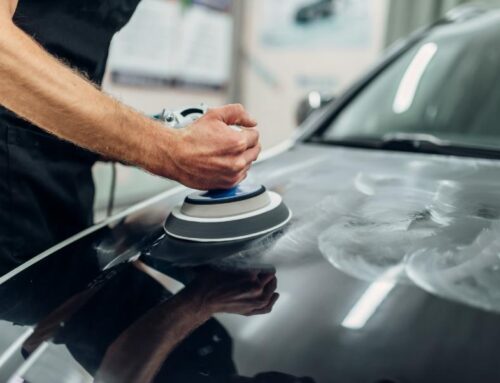When it comes to detailing your vehicle, you may have asked yourself the question “better wax or polish?” It can be difficult to decide which is best for your car’s finish. Wax and polish both provide protection from dirt, UV rays, scratches and more; however they each offer different benefits that should be taken into consideration when deciding what works best for you.
In this blog post we will explore the differences between waxing and polishing as well as their respective advantages so that you can make an informed decision on whether better wax or polish is right for your car!
Table of Contents:
- Wax vs. Polish: What’s the Difference?
- Benefits of Waxing
- Benefits of Polishing
- When to Use Wax or Polish
- DIY vs Professional Detailing
- FAQs in Relation to Which is Better Wax or Polish?
- Conclusion
Wax vs. Polish: What’s the Difference?
Wax and polish are two of the most common products used in auto detailing. While they may seem similar, there are some key differences between them that can help you decide which one is best for your vehicle.
Ingredients: Wax and polish both contain abrasives, but wax also contains a protective coating or sealant. This helps to protect the paint from damage caused by UV rays, dirt, dust, road salt and other environmental factors. Polish does not have this added protection.
Application Method: Wax should be applied using a soft cloth or applicator pad in small circular motions until it has been completely rubbed into the surface of the car’s paintwork. It is then buffed off with another clean cloth or microfiber towel to remove any excess product before being left to dry naturally on its own. Polishing requires more effort as it needs to be worked into the surface of the car with an orbital polisher machine at low speed settings until all traces of scratches and swirl marks have been removed from the paintwork before being wiped away with a clean cloth or microfiber towel afterwards.
The results achieved when using wax will depend on how well it was applied as well as what type of wax was used; however generally speaking, it will leave behind a glossy finish that provides extra protection against dirt, dust and other environmental elements while making your car look brand new again. Polishing on the other hand will result in an even smoother finish without any visible signs of scratches or swirl marks due to its ability to remove these imperfections from your cars paintwork altogether – leaving you with a showroom-like shine every time.
If you want extra protection for your car’s paint job then waxing is recommended as this will provide long lasting protection against UV rays, dirt and dust while giving your vehicle an eye catching shine. On the other hand if you need something more powerful than just waxing then polishing would be better suited for removing stubborn scratches and swirl marks from your cars exterior surfaces quickly without having to worry about damaging them further either way; so make sure you choose wisely depending on what kind of results you’re after.
DIY auto detailing can save money, but may not always produce professional quality results compared to those achieved by experienced professionals. Professionals know exactly how much pressure should be applied when applying certain products like waxes and polishes, plus they have access to specialized tools such as buffers and machines which can help get rid of tough stains and blemishes quickly without causing any additional damage. Whenever possible, it is recommended to hire someone who knows what they are doing instead of attempting DIY auto detailing.
Waxing and polishing are both great ways to keep your car looking its best, but it’s important to understand the difference between them in order to get the most out of each process. Now let’s take a look at some of the benefits of waxing.
Benefits of Waxing
Waxing is a popular method of auto detailing that helps protect and enhance the appearance of your vehicle. Wax can be applied to paint, plastic, rubber, and other surfaces on your car to provide protection from UV rays and improve shine. It also helps fill in small scratches or swirl marks while providing an extra layer of protection against dirt, dust, bird droppings, tree sap, and more.
When it comes to protecting your car’s paint job from fading due to sun exposure over time, wax is one of the best methods available. The wax forms a barrier between the paint surface and environmental elements like UV rays that can cause oxidation or fading over time. This means you won’t have to worry about having to repaint or touch up areas as often as you would without waxing regularly.
Wax also provides additional glossiness which enhances the look of any vehicle’s exterior by giving it a deeper luster than what could be achieved with just regular washing alone. When applied correctly with high-quality products such as Carnauba Waxes (the most common type used for automotive detailing), this added shine will last longer than if you were using cheaper alternatives such as spray detailers or liquid polishes instead.
In addition to enhancing glossiness levels on painted surfaces, waxing also adds depth by filling in minor imperfections such as swirl marks left behind after improper washing techniques are used or even light scratches caused by debris hitting the surface at high speeds while driving down highways/freeways etc. This makes any vehicle look brand new again.
Finally, another great benefit of applying wax is its ability to act like a “sacrificial layer” when exposed to harsh chemicals found in road salt during winter months (or other contaminants). As long as there is enough product applied properly across all surfaces, these corrosive materials will not penetrate through into underlying layers causing permanent damage, making sure your car looks great for years ahead.
Waxing provides a long-lasting, glossy finish that will keep your car looking new and shiny for longer. Polishing is the next step to achieving an even more stunning look.
Benefits of Polishing
Polishing is an important part of auto detailing that can help restore the paint and make a car look like new. Polishing removes scratches, swirl marks, oxidation, and other imperfections from the paint surface. It also helps to restore the color of faded or dulled paintwork.
When done correctly, polishing will not only improve the appearance of your vehicle but also increase its value by preserving its original condition for longer periods of time. Polishing should be done with a high-quality polish designed specifically for automotive use in order to achieve optimal results without damaging the paintwork.
The process begins by washing and drying your car thoroughly before applying a pre-polish cleaner to remove any dirt or contaminants on the surface. This step is essential as it prevents further damage when you begin polishing. After this has been completed, you can apply a rubbing compound which works to break down larger scratches and swirl marks while restoring clarity and shine to your vehicle’s finish. Finally, you can apply a finishing polish which will bring out even more glossiness in addition to protecting against UV rays and environmental pollutants such as bird droppings or tree sap residue.
Professional detailers may use machine buffers during this process instead of hand polishers; however, these are best left for experienced professionals due to their power level which could cause damage if used incorrectly or too aggressively on certain surfaces such as plastic trim pieces or rubber seals around windows etc. Additionally, some professional detailers may opt for using ceramic coatings after polishing in order to provide extra protection against UV rays and pollutants while providing additional glossiness and slickness compared with traditional waxes and sealants alone.
Overall, proper care must be taken when performing any type of detailing service, so it is always recommended that you seek out an experienced professional who understands how different products work together to create the desired results without causing any harm.
Polishing your car can give it a glossy, smooth finish that is sure to turn heads. But when should you use wax or polish? Let’s take a look at the differences between the two and how they can help keep your vehicle looking great.
When to Use Wax or Polish
Wax is used to protect the paint from dirt, dust, and other contaminants while polishing helps restore shine and clarity. It’s important to know when each should be used in order to get the best results for your vehicle.
Waxing should be done regularly on cars with clear coat finishes as it provides protection against UV rays that can cause fading or discoloration over time. It also helps repel water which can help reduce water spots caused by minerals in hard water. Waxing should be done every 3-4 months or more often if you live in an area with high humidity or frequent rain showers.
Polishing is usually done after waxing has been completed as it will remove any oxidation that may have occurred since the last wax job was performed. Polishing will also help bring out the natural color of your paintwork and make your car look like new again! You can do this yourself using a dual action polisher but professional detailers recommend having this step professionally done at least once per year for optimal results.
It is important not to confuse waxing with polishing as they serve different purposes – one protects while the other restores shine and clarity. If you want maximum protection for your car’s finish then both processes need to be carried out regularly, either through DIY or a professional auto detailing service provider depending on how much time you have available and what kind of results you are looking for.
Wax and polish can both be used to keep your car looking its best, but knowing when to use each is important. Moving on, let’s discuss the differences between DIY detailing and professional detailing.
DIY vs Professional Detailing
DIY or professional. Both can be effective in making your car look its best, but there are some key differences between the two that you should consider before deciding which is right for you.
Cost: The cost of DIY detailing will depend on the products and tools you choose to use. You may need to purchase a few items such as waxes, polishes, brushes, towels and other supplies. Professional detailing services typically charge by the hour or job size and usually include all necessary materials and labor costs in their price quote.
Time Commitment: DIY auto detailing requires more time than professional services because it’s often done piecemeal over several days or weeks depending on how much work needs to be done. Professional detailers can usually complete a full detail in one day or less since they have access to specialized equipment that speeds up the process significantly.
When done correctly, both DIY and professional auto detailing can produce excellent results; however, professionals tend to get better results due to their experience with various techniques and products used during the process as well as their ability to spot potential issues before they become major problems down the road (e.g., rust spots). Professional detailers also have access to specialized equipment that speeds up the process significantly, resulting in higher quality work in a shorter amount of time.
FAQs in Relation to Which is Better Wax or Polish?
Which is better car polish or wax?
The answer to this question depends on the condition of your car’s paint and what you are trying to achieve. Car polish is a liquid product that contains abrasives which can be used to remove scratches, oxidation, and other surface imperfections from your vehicle’s paint. Wax, on the other hand, is a protective coating that helps protect against UV rays and water spots while also giving it a glossy shine. If you have minor surface defects in your car’s paint or want an extra layer of protection for long-term maintenance then wax is the better option; however if you need more aggressive cleaning then car polish may be necessary. Ultimately both products have their own unique benefits so it really comes down to personal preference when deciding which one will work best for you.
What is the difference between polish and wax?
Polish and wax are both products used to protect and enhance the appearance of a vehicle. The main difference between them is that polish contains abrasives which help remove scratches, swirls, oxidation, and other imperfections from the paint surface. Wax does not contain any abrasives but instead creates a protective layer on top of the paint to seal in shine and provide protection against UV rays, dirt, water spots, bird droppings etc. Polish should be applied first followed by wax for best results as it will help fill in minor imperfections before sealing them with wax.
Which comes first wax or polish?
Polishing comes first when detailing a vehicle. Polishing is the process of removing minor scratches, swirls, and oxidation from the paint surface to restore clarity and shine. This step should be done before waxing as wax will not fill in or remove any imperfections on the paint surface. Waxing provides protection to the paint by creating a barrier between it and environmental contaminants such as dirt, dust, UV rays, etc., so that your car looks glossy and new for longer periods of time.
Should I wax my car after polishing?
It is generally recommended to wax your car after polishing. Waxing helps protect the paint and finish of your vehicle, while also giving it a glossy shine. Polishing removes scratches and imperfections from the surface of your car, but waxing seals in that polished look and provides an extra layer of protection against dirt, grime, and other environmental elements. Applying a quality wax can help keep your car looking its best for longer periods of time.
Conclusion
In conclusion, when it comes to better wax or polish for auto detailing, the answer depends on your vehicle and what you want to achieve. Wax is great for protecting paint and giving a glossy finish while polishing can help remove scratches and restore dull paint. Ultimately, it’s best to consult with a professional detailer who can assess your car’s needs and determine which product will work best for you.
If you’re looking to make your car shine like new, then wax or polish is the way to go! Wax and polish are two of the most popular auto detailing services that can help keep your vehicle looking its best. Whether it’s a simple wash-and-wax job or an intensive buffing and polishing session, professional auto detailers have the expertise needed to ensure optimal results. Contact a local Phoenix car detailing service today for more information on how they can give your ride a showroom finish with either wax or polish!




